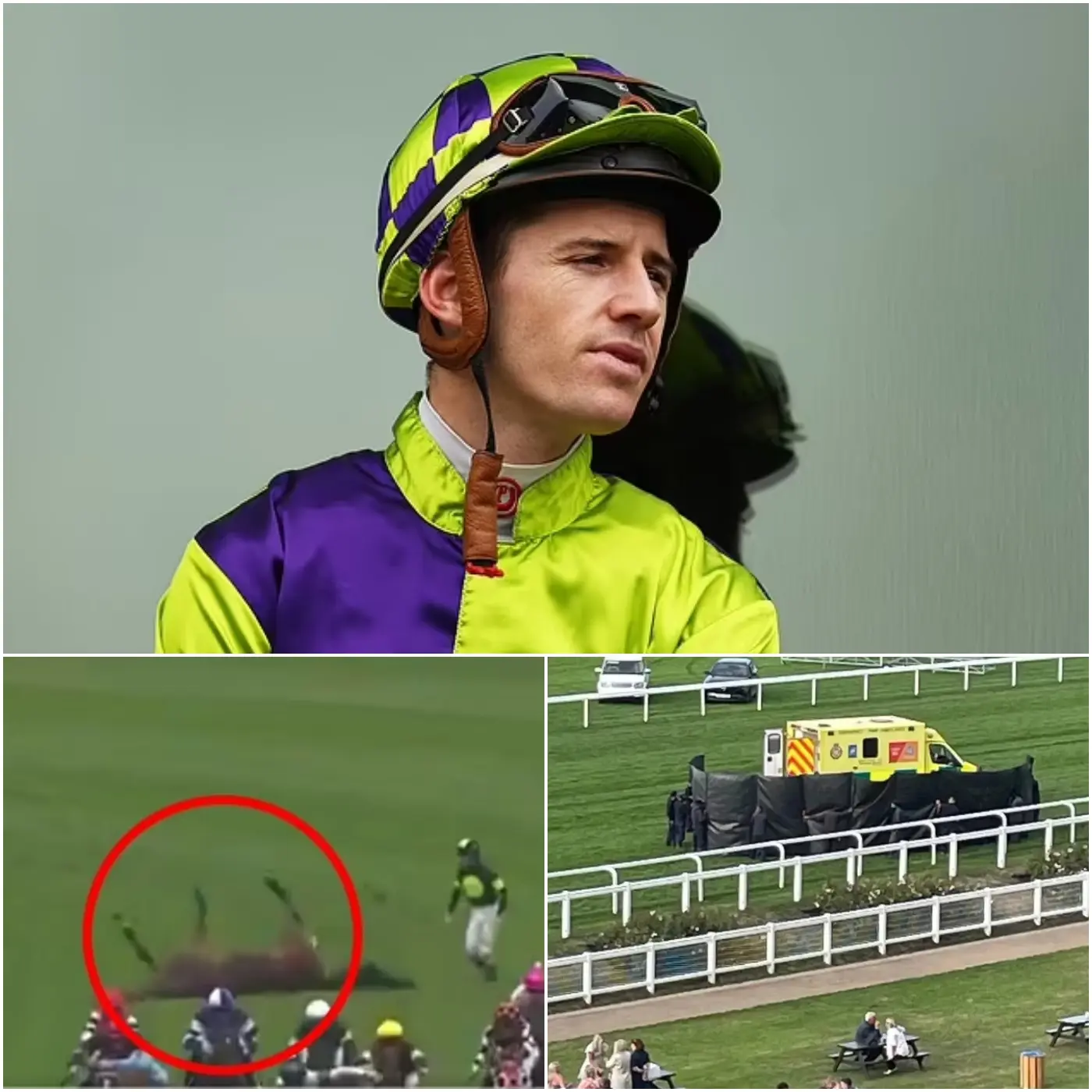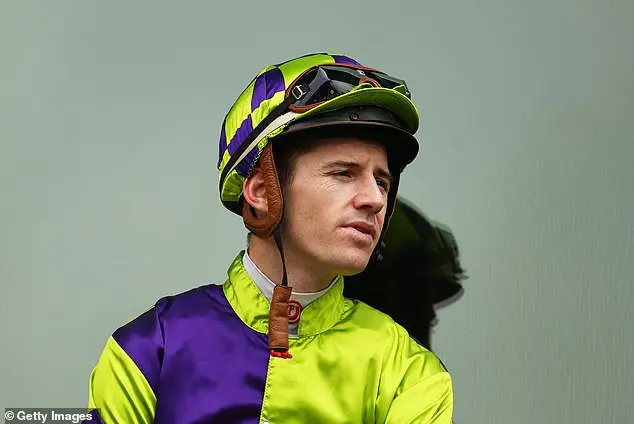In the heart-pounding chaos of Royal Randwick Racecourse, where the thunder of hooves and the roar of the crowd blend into a symphony of speed and spectacle, a single, harrowing instant shattered the illusion of control. It was October 19, 2024, during the $2 million Sydney Stakes—a Group 1 sprint over 1200 meters that draws the elite of Australian thoroughbred racing.
The field of eleven champions thundered around the final turn, jockeys urging their mounts toward glory in the shadow of The Everest Carnival’s glittering prestige. Among them was Jason Collett, a seasoned 33-year-old rider with a reputation for quiet professionalism, astride Think About It, the 2023 Everest winner and a horse whose black coat and unyielding spirit had captivated fans nationwide.

As the pack barreled into the straight, Think About It, positioned at the rear, suddenly faltered. His legs buckled beneath him, not from a trip or a stumble, but from a catastrophic pulmonary hemorrhage—a massive internal bleed that struck without mercy. The six-year-old gelding,
sired by the legendary So You Think, collapsed in a heap at nearly 60 kilometers per hour, his powerful frame tumbling across the turf in a blur of dust and desperation. Collett was hurled from the saddle, somersaulting through the air before landing hard on the track. Spectators held their breath, expecting the worst: a broken rider, a broken horse, the kind of tragedy that haunts the sport’s collective memory.

What happened next defied belief. Collett, dazed but undeterred, scrambled to his feet in an instant. Ignoring the adrenaline-fueled stampede of the other horses charging past—mere meters away, their hooves pounding like war drums—he sprinted back to his fallen partner. There, amid the flying divots and the acrid scent of sweat-soaked earth, Think About It thrashed in agony, his eyes wide with panic, legs flailing against the ground that had betrayed him.
Collett dropped to his knees beside the horse’s head, his hands gentle yet firm, stroking the muzzle and murmuring words lost to the din but etched in every viewer’s mind. “Easy, boy,” one could imagine him saying, though later he would describe it as pure instinct: “Your natural reaction is to check on the one beside you, like in any accident.”

For 20 agonizing seconds, Collett stayed there, a human shield against the horse’s torment, until trackside vets and strappers rushed in to assist. Only then did he rise, brushing off the dirt, his face a mask of concern rather than triumph or defeat. Miraculously, Collett walked away unscathed, cleared by medics to complete his day’s rides. But the image of him cradling Think About It amid the oblivious surge of the race became an instant emblem of the bond between man and equine athlete—a raw, unfiltered glimpse into the soul of racing.

Staggeringly, the Sydney Stakes pressed on. Stewards waved the field clear, the photo finish captured I Wish I Win edging out Communist in a dead heat, and the winner’s circle buzzed with champagne toasts as if the track hadn’t just become a scene from a nightmare. No red flag halted the proceedings; no announcement pierced the PA system to acknowledge the drama unfolding just yards from the finish line.
The crowd, packed into the grandstands under a crisp Sydney spring sun, erupted not in cheers, but in a cacophony of boos and jeers. “Stop the race!” echoed from the rails, phones held aloft capturing the disbelief. Social media ignited like dry tinder: “How can they let this happen? It’s barbaric,” one punter posted on X, amassing thousands of likes. “Racing NSW has blood on its hands,” another fumed, tagging stewards in a digital storm of outrage.
The condemnation was swift and bipartisan, cutting across casual fans and hardened industry insiders. Animal rights groups like Voiceless decried the “callous disregard for life,” calling for an immediate review of protocols. Prominent trainers, including Chris Waller, voiced unease in post-race interviews: “We all saw it—Jason’s bravery was heroic, but the decision to keep running? That’s a stain on the day.”
Racing NSW chief steward Steve Railton defended the call, citing rules that prioritize rider safety and momentum once the field is strung out, but even he admitted Collett’s actions were “noteworthy” in their selflessness. “The prognosis looked grim from the moment Think About It hit the ground,” Railton said. “Jason’s presence of mind to calm him… that saved seconds that mattered.”
As the sun dipped below the horizon, updates trickled in like hesitant rain. Think About It, stretchered off under a screen of privacy tarps, was rushed to the vet clinic. Trainer Joe Pride, a man whose stable had nurtured the horse from a promising colt to a Group 1 star, waited in dread. “I walked down expecting the worst,” Pride recounted, his voice cracking in a Channel 7 interview.
“Then I saw his big head bobbing up above the barriers. Relief doesn’t cover it.” Vets confirmed the hemorrhage was severe but contained—no shattered bones, no irreparable damage. By Sunday morning, the horse was “bright and happy,” grazing in his stall as if the tumble were a distant dream. “He rolled at speed, but he doesn’t seem sore at all,” Pride marveled. “It’s a miracle.”
The aftermath rippled far beyond Randwick’s hallowed grounds. Think About It, with nine wins from 19 starts and over $10 million in prizemoney, was unceremoniously retired. Owners Yulong Investments, ever pragmatic, opted for a life of paddock leisure over the risks of the track. “He’s earned his rest,” Pride affirmed, vowing to visit often. Collett, reflective in the days that followed, revealed the toll: “My first thought wasn’t myself—it was him.
Horses give everything; you owe them that.” His peers showered praise; rival jockeys like James McDonald called it “the gutsiest thing I’ve seen.” Fans, too, rallied, with a GoFundMe for equine welfare surging past $50,000 in 48 hours.
Yet the incident lingers as a stark reminder of racing’s precarious edge. The Sydney Stakes, meant to celebrate speed and strategy, instead exposed the fragility beneath the glamour. Why no pause? Critics point to outdated bylaws, arguing for tech like onboard sensors to detect distress in real-time. Proponents of the sport counter that such falls are rare—hemorrhages strike one in 300 starters—and that halting mid-race endangers riders more. But in an era where public scrutiny demands transparency, the debate rages. One X user summed it up: “Jason showed us heart. The stewards showed us procedure. Who’s really winning?”
One year on, as November breezes sweep Randwick once more, the moment remains etched in racing lore. Think About It, now a gentle retiree in the Hunter Valley, nickers at familiar voices. Collett rides on, chasing Group 1 glory with the same quiet resolve. And spectators, forever changed, watch with eyes sharpened by that unbelievable afternoon—a testament to courage, controversy, and the unbreakable thread tying humans to the horses that carry their dreams.






